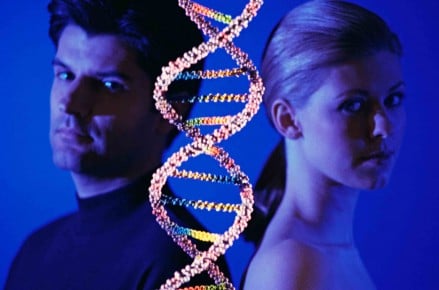What Privacy? Ancestry.com Shares Private DNA with Police
Private genetic-genealogy data tags innocent man as murder suspect.
 Americans curious whether any of their ancestors may have come over on the Mayflower or signed the Declaration of Independence should consider the legal nightmare the genealogical website Ancestry.com created for a New Orleans man.
Americans curious whether any of their ancestors may have come over on the Mayflower or signed the Declaration of Independence should consider the legal nightmare the genealogical website Ancestry.com created for a New Orleans man.
Someone else’s DNA sample, a few Facebook friends who lived over 1,500 miles away, a few award-winning films that included murder as a theme and a website that violated its own privacy guidelines became the perfect storm for filmmaker Michael Usry Jr., making him a murder suspect, reported the Electronic Frontier Foundation.
Usry’s problems begin in 1996 when a young woman named Nancy Dodge was murdered in a small Idaho town. Despite collecting semen from the crime scene, police were unable to match the DNA of the likely suspect to anyone in any criminal database, resulting in the case going cold until last year.
Investigators reopened the case by casting a wider genetic net, testing the sample in their files to identify familial connections to the suspected killer. Using a lab linked to a private genetic-genealogical database called the Sorenson Database, now owned by Ancestry.com, a DNA profile that included YSTR and mtDNA – two genetic markers used to identify patrilineal and matrilineal relationships – was extracted. This was done without a warrant or court order.
With more than 100,000 DNA samples and documented multi-generational family histories from “volunteers in more than 100 countries,” Sorenson bills itself as the “the foremost collection of genetic-genealogy data in the world.” Those volunteers, many of which were Mormons, were promised by Sorenson that submitted DNA would be used only for “genealogical services, including the determination of family-migration patterns and geographic origins,” and the profiles would be assigned “protected” names to assure anonymity and would not be shared with outsiders.
Those promises notwithstanding, Sorenson ran the murder suspect’s DNA profile against the Sorenson Database, identifying 41 potential family matches, with one matching on 34 of 35 alleles, or gene variants. At the request of Idaho authorities – and without a warrant – Sorenson released the full name, address and other information for the volunteer’s private data.
The “matched” DNA profile for a man born in 1952, however, did not fit the profile police had already developed for their suspect. Expecting a younger man, police examined Sorenson’s database to identify male descendants for their “match,” and focused on his son, Michael Usry Jr., born in 1979 and living in New Orleans.
Usry’s Facebook page revealed some Facebook friends who lived 1,500 miles away in Idaho, and a Google search showed he had made award-winning short films with murder and killing as themes. Based on this evidence, a judge issued a warrant for officers to collect a DNA sample from Usry.
On the pretext of investigating a hit-and-run, officers made an appointment to meet with Usry, and Usry agreed, believing he “had nothing to hide.” Following an extended interrogation without a lawyer present, Usry submitted to the collection of a swab sample.
It took a month for the results to be returned.
“I had lots of days sitting at the house with the dog,” Usry told the New Orleans Advocate, “wondering if these guys were going to use a battering ram to bust open the door and shoot my dog after he started barking at them.”
Despite the exceptionally close familial match, his DNA didn’t match the sample collected in 1996 at the murder scene and he was cleared.
Fortunately for Usry, EFF notes, the forensic sample came from semen, probably from a single suspect, making it easy for investigators to eliminate him. But forensic samples from other crime scenes can include multiple sources of DNA.
Increasingly, state and local law enforcement are being encouraged to use Rapid-DNA analyzers in the field for property crimes, where the DNA is collected from touched surfaces. The quality of the resulting profile is suspect, particularly when used to identify familial relationships, yet may still end up in a database that is used to match a suspect.
Erin Murphy, a professor at the New York University School of Law who has written about familial searching, told the Advocate Usry’s case is the first she’s seen where police used a publicly accessible database like Sorenson, as opposed to a private law-enforcement database, to develop an investigative lead.
“I think what we’re looking at is a series of totally reasonable steps by law enforcement,” Murphy said. “But it has this really Orwellian-state feeling to it, and it is a huge indictment of private genetic testing companies and the degree to which people seamlessly share that information online.”
http://www.wnd.com/2015/05/ancestry-com-shares-dna-with-police/
